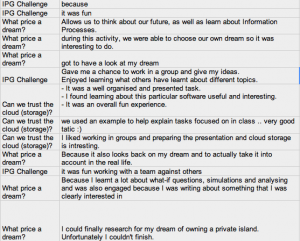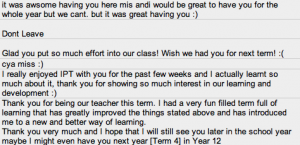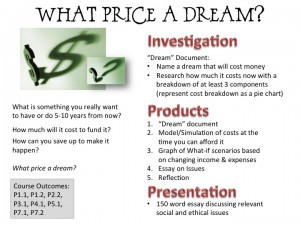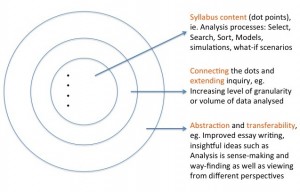I love planning, I do. My kids’ birthday parties are legendary among their circles and a good friend has even advised me to write a book about them. When my youngest turned 6, you know what she asked?
“Can we have free play?”
Free play? As in, “do whatever you want?” Apparently, my parties were so structured with a tight schedule and the kids just want to device their own games, happy to be together.
Studying to be a teacher involved planning lessons (and units), including using a template scheduling how much time to allocate for each part. I was in my element! Planning, I could definitely do. And students? Well, they couldn’t ask for “free play”, could they?
But, times have changed, because I have learned to …..
That’s it, I’ve learned to relax. I still plan – parties and lessons – to a (rough) schedule but I have learned to “let go” or be flexible (read: I schedule in free play). Plans can change and they do and they will. Part of this metamorphosis-of-sorts is playing with different teaching approaches that necessitate such flexibility.
I think Mary Ann Reilly said it well in this post, “When I make art my head gets calm”.
I think about the grand schemes and plans that get made (like the one I did) and how the lived moments in the classroom must trump the pre-made plans.
“the lived moments in the classroom” – YES!
On the same day, Phil Beadle said in this interview on ABC Radio,
You can be charismatic. You can be entertaining. But you must not be so big as to have no room in the classroom for the children.
The classroom is a shared space where interactions take place; some of them are meaningful, some of them can be life-changing (though we may never know), some of them are fun, some can be harrowing. But the “lived moments” are the most wonderful part of teaching…even better than planning. How I’ve changed!
Do you make room?
Recommended reading:
(Post update to show there’s more than one way to tell this story – more for my reference but see for yourself)
Teaching and Learning: The having of wonderful ideas by @cpaterso
Sometimes you have to stop teaching to learn the lesson by @erringreg







